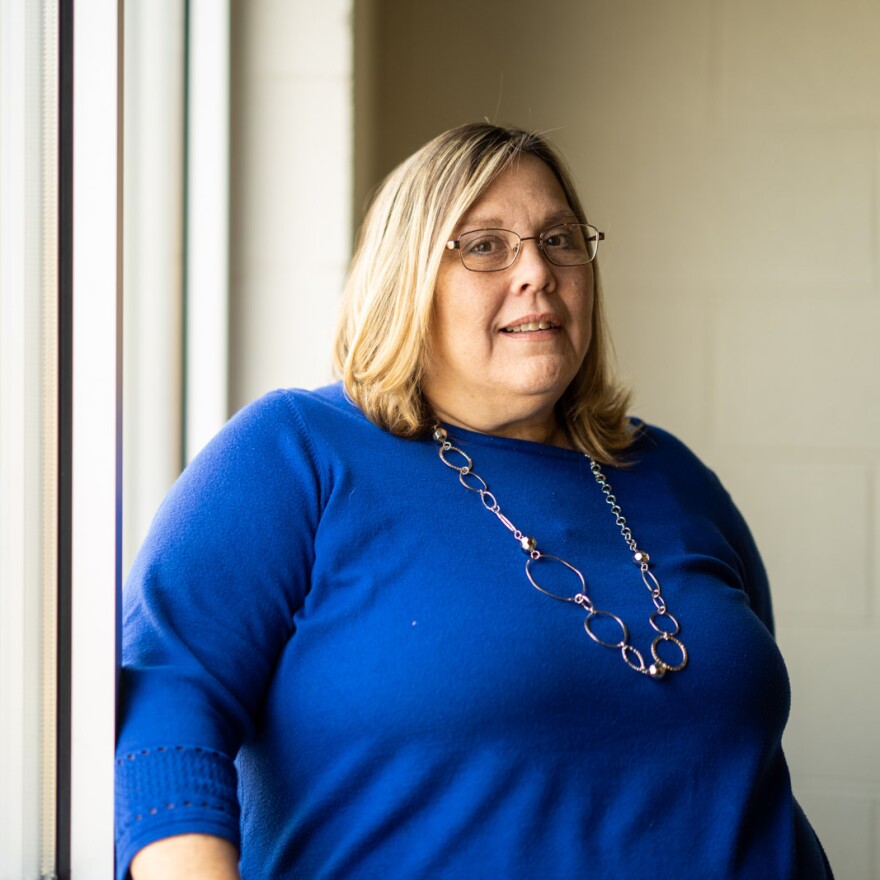In this follow-up report on methamphetamines, WMRA's Randi B. Hagi talks with practitioners who help those seeking to end their dependence on the drug.
Tonia Taylor sees a lot of people struggling with meth addiction at the Valley Community Services Board in Staunton, where she's the assistant director of outpatient behavioral health.
TONIA TAYLOR: Methamphetamine, or – it's identified as Other Stimulant Use Disorder in our DSM – is the prominent diagnosis for substance use. And then it goes down to amphetamines; and then opioids – which are primarily heroin, fentanyl, and oxycontin; cannabis; and then alcohol.
The CSB offers walk-in substance use evaluations three days a week, and from there clients can be referred either to inpatient facilities for treatment, or one of the CSB's outpatient group programs, which range from one to nine hours a week depending on the client's level of need and their commitment to recovery.

The majority of their substance use outpatient clients have stimulant use - that is, meth - as a primary or secondary diagnosis. And of the 125 clients enrolled in a program primarily for opioid use disorder, 40% also have a problem with stimulants.
TAYLOR: We have many patients with a physiological dependence on stimulants, to the degree that they're really unable to function optimally in their daily lives without that kind of false energy … So when they're unable to cope with the fatigue, they will often relapse or reuse the illicit stimulant. Then we also have a percentage of clients who are struggling with kind of trading one substance for the other.
She said the majority of meth users are referred to the CSB through the courts system. A handful are parents who are being looked at by Child Protective Services –
TAYLOR: … and then a very super-small percentage will self-refer.
Taylor has a theory on why so few seek help voluntarily, based on her own observations.
TAYLOR: As I've been in the treatment rooms with these clients that have had this struggle, you know, the large majority, as odd as this is going to sound, are using – in their belief system – to function … Unfortunately, sometimes they're working, you know, 60 hours a week, or they're working a full-time job and then they're working a part-time job in the evenings and on the weekends, like they're working a lot to meet their needs, to pay legal fines, to work to get children back who have been removed from their custody.
Jenni Collings, the adult programs manager for the nonprofit Strength in Peers, experienced that dependence on meth to function firsthand.
JENNI COLLINGS: You know, I used to think I had to do it to clean the house. I had to do it to be able to run after the kids, and keep up with the children. It was just a quick fix. A lot of people will get up and have their coffee or their energy drink, and that suffices.
Collings used meth and other drugs for 33 years, and has been clean now for 15. She joined Strength in Peers in 2017 as someone in recovery, then became a certified peer recovery specialist – someone with lived experience of substance use or mental health issues who's been trained to support others in their healing.
She said that many who use meth start doing so to self-medicate for a mental health issue.

COLLINGS: Then they get used to increasing the serotonin, dopamine, and when they don't have it, the littlest problem that comes up, they look for something to make them feel better … and it just takes a while for those nerve receptors to go dormant. Just because you quit using doesn't mean they've gone dormant immediately.
Dr. Daniel E. Rusyniak wrote in a 2013 article in the Psychiatric Clinics of North America journal that methamphetamine damages pleasure receptors in the brain. He argues that may help explain its high abuse potential. Without the drug, the person's ability to experience pleasure is impaired, making them more susceptible to deep depression. And, similarly to patients who have damaged frontal lobes, he writes that meth addicts have great difficulty in changing their behavior even when it's become destructive.
Collings said it took her a few years before she felt like her own body took over producing serotonin and dopamine at normal levels.
COLLINGS: I'm a member of a twelve step program. That's made a big difference. Besides the twelve steps, it was coming up with a support network of other individuals who also wanted to be clean. I really had to change the people I hung out with, and that was difficult at first. But for me, I also had to get mental health treatment to deal with depression.
She said that having her family by her side throughout all this was a real blessing.
COLLINGS: Not everybody has a supportive family. By that point, a lot of people's families have just said "I've had enough," and they give up. And my family continued to support me, and I don't take that for granted. That was very instrumental in my recovery. They're still there today. And for me, just being able to give that recovery back to others has enhanced my recovery. I can't believe I get to do this for a living. I'm like, wow. [chuckles]


